Treating High Blood Pressure in People with Diabetes
(modified from American Diabetes Association Toolkit No. 20, www.diabetes.org.)
High blood pressure, or hypertension, raises your risk for heart attack, stroke, eye problems, and kidney disease. As many as 2 out of 3 adults with diabetes have high blood pressure. High blood pressure is a condition that will not go away without treatment. You can prevent or delay diabetes problems by having your blood pressure checked regularly.
What is high blood pressure?
Blood pressure is the force of blood flow inside your blood vessels. If your blood moves through your vessels with too much force, you have high blood pressure. When your healthcare providers check your blood pressure, they report it as 2 numbers, such as 140/90. You will hear them say this as “140 over 90.” Both numbers are important.
- Systolic pressure is the first number: the pressure as your heart beats and pushes blood through the blood vessels.
- Diastolic pressure is the second number: the pressure when the vessels relax between heartbeats.
What should my blood pressure target be?
A target blood pressure of below 140/80 is optimal for people with diabetes to help lower your risk for diabetes problems.
How will I know if I have high blood pressure?
High blood pressure is a silent problem. You will not know you have it unless your healthcare provider checks your blood pressure. It is recommended that you have your blood pressure checked at every routine medical visit.
What should I do?
Both lifestyle changes and medicines help control blood pressure. Treatment varies from one person to the next. Some people can reach their blood pressure targets with lifestyle changes. Other people need medicines and lifestyle changes. Work with your healthcare providers to find what is right for you.
Lifestyle changes
Lifestyle changes can help control your blood pressure, blood glucose, and blood lipid (cholesterol and triglyceride) levels.
Make wise food choices
- Try to have several servings of fruits and vegetables per day. Have at least one serving at each meal.
- Switch to low-fat or fat-free dairy products (eg. fat-free milk, non-fat yogurt, and reduced-fat cheese).
- Select whole-grain, high-fibre foods (eg. 100% whole wheat bread, brown rice, and oats).
- Eat unsalted nuts and other healthy fats in small portions.
- Choose lean meats and meat substitutes (eg. beans, lentils, fish, chicken or turkey without the skin, lean beef trimmed of visible fat or tenderloin part).
- Use healthy cooking methods that require less fat (eg. baking, roasting, broiling, or grilling).
- Add very little or no salt to your food during cooking and at the table.
- Season your food with salt-free herbs and spices instead of salt or try citrus juices or garlic.
- Use the nutrition labels to compare foods and choose those with less sodium.
Lose weight or take steps to prevent weight gain
- Cut down on calories by limiting sugary drinks, sweets, and salty snacks.
- Try to be more physically active than you are now.
Be physically active
- If you feel unsure about your health, check with your health care provider before making big changes in your exercise plan.
- Aim for a total of about 30 minutes of aerobic exercise, such as brisk walking, most days of the week. In addition, do some sort of resistance training 2 or more times per week.
Be careful with alcohol
- Talk with your health care team about whether it is wise to have alcoholic beverages.
- If you choose to drink, do so in moderation. Limit yourself to 1 serving a day (for women) or 2 servings a day (for men).
If you smoke, quit smoking
- Talk with your health care team about how to quit.
- Go to a “quit-smoking” clinic.
Medicines
Not everyone takes the same blood pressure medicine and many people take 2 or more medicines. The ones you take will depend on your blood pressure numbers and other factors.
- ACE (angiotensin-converting enzyme) inhibitors: lower blood pressure by keeping your blood vessels relaxed. ACE inhibitors prevent a hormone called angiotensin from forming in your body and narrowing your blood vessels. These medicines also help protect your kidneys and reduce your risk of heart attack and stroke.
- ARBs (angiotensin receptor blockers): keep the blood vessels open and relaxed to help lower blood pressure. ARBs also protect your kidneys.
- Beta blockers: help lower blood pressure and relax your heart by allowing it to beat slower and with less force. Beta blockers help prevent heart attack and stroke.
- Calcium channel blockers: help the blood vessels relax by keeping calcium out of your blood vessels and heart.
- Diuretics: sometimes called “water pills,” help rid your body of extra water and sodium through urine.
Anyone with diabetes and blood pressure higher than 140/80 should take either an ACE inhibitor or ARB. People with diabetes and high blood pressure also may need a diuretic medicine.


